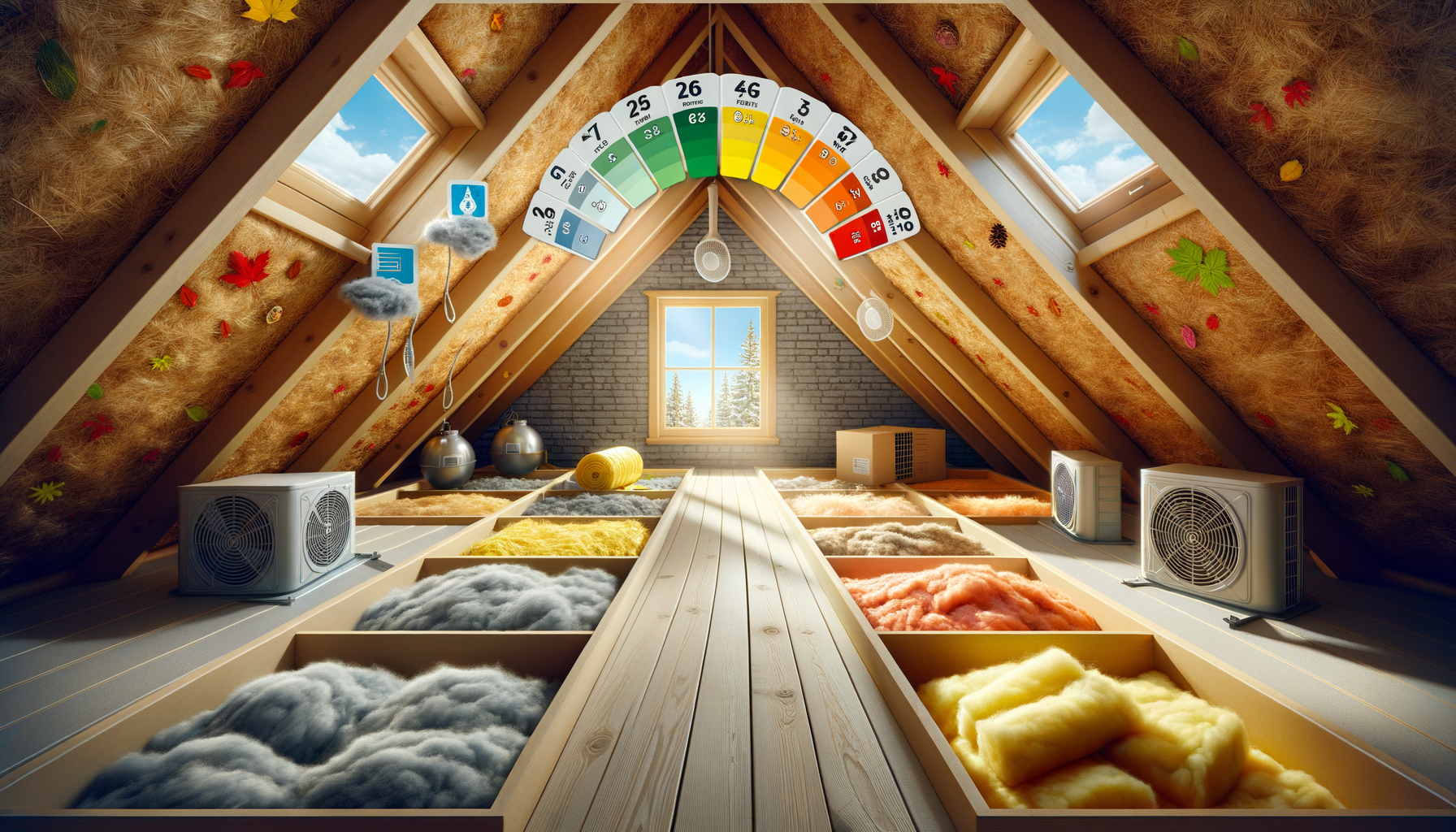Understanding the Basics of Attic Insulation
Attic insulation is a crucial component in home energy efficiency. It acts as a barrier that reduces the heat flow between your living space and the outdoors. During the summer, insulation keeps the heat out, and in the winter, it retains warmth inside. This results in a more consistent indoor climate, which is not only comfortable but also energy-efficient.
There are several types of attic insulation, each with its unique properties and benefits. The most common types include:
- Fiberglass Batts: Known for their ease of installation and cost-effectiveness.
- Blown-In Insulation: Offers comprehensive coverage, filling gaps and corners.
- Spray Foam: Provides a high R-value and acts as both an insulator and air barrier.
Choosing the right type of insulation depends on various factors, including your climate, budget, and the specific needs of your home. By understanding these basics, homeowners can make informed decisions that enhance their home’s energy efficiency.
The Energy Efficiency Edge
Proper attic insulation significantly impacts energy consumption. According to the U.S. Department of Energy, a well-insulated attic can reduce heating and cooling costs by 15% to 20%. This is because insulation minimizes the amount of energy required to maintain comfortable temperatures inside the home.
Insulation’s effectiveness is measured by its R-value, which indicates its resistance to heat flow. The higher the R-value, the better the insulating power. Different regions require different R-values based on climate conditions. For instance, colder regions need higher R-values to combat heat loss during winter.
Investing in high-quality insulation not only reduces utility bills but also lessens the environmental impact by decreasing the demand for energy production. This makes attic insulation a smart choice for both your wallet and the planet.
Improving Indoor Comfort
A well-insulated attic contributes to a more comfortable living environment. It helps maintain a stable indoor temperature, reducing fluctuations that can occur with poor insulation. This stability is particularly beneficial in homes with multiple stories, where temperature differences between floors can be pronounced.
By reducing drafts and cold spots, attic insulation creates a more uniform temperature throughout the home. This is especially important in areas of the house that are prone to being too hot or too cold, such as rooms directly below the attic.
Moreover, insulation can also help in soundproofing, creating a quieter indoor environment. This is particularly advantageous for homes in noisy neighborhoods or near busy roads, as it dampens external sounds.
Long-Term Financial Benefits
While the initial cost of installing attic insulation can be significant, the long-term financial benefits often outweigh these initial expenses. Homeowners can expect to see a return on investment through reduced energy bills and increased home value.
In many cases, homes with proper insulation have a higher resale value. Potential buyers are often willing to pay more for a home that promises lower energy costs and improved comfort. Additionally, some regions offer tax credits and incentives for energy-efficient home improvements, further offsetting the installation costs.
Regular maintenance and periodic upgrades of attic insulation ensure that it continues to perform optimally, providing ongoing savings and comfort.
Environmental Impact and Sustainability
Attic insulation plays a vital role in reducing a home’s carbon footprint. By decreasing the amount of energy needed for heating and cooling, insulation helps lower greenhouse gas emissions. This is a significant step toward a more sustainable and environmentally friendly home.
Many insulation materials are made from recycled or renewable resources, adding to their environmental benefits. For instance, cellulose insulation is often made from recycled paper products, while some fiberglass options use recycled glass.
Choosing eco-friendly insulation materials and ensuring proper installation can amplify these benefits, making your home not only energy-efficient but also aligned with sustainable living practices.




Leave a Reply